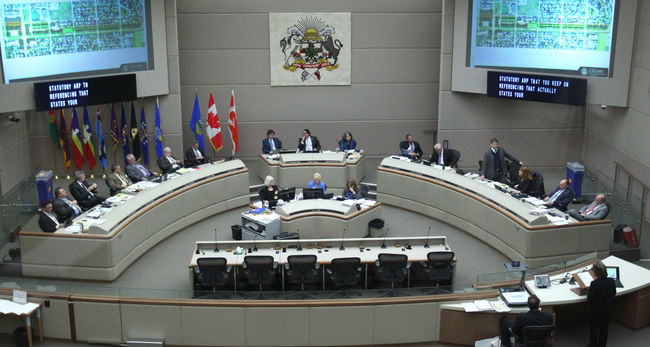2017 Non-Residential Property Tax Relief
2016 was a tough year for Calgary. The economic downturn in Calgary has had a dramatic impact on a large number of businesses in our city. Many of these businesses have seen a decrease in customers and have had to lay off employees. Some businesses have been unable to whether the current storm and have had to close their doors. While the early analysis suggests 2017 might be better, some early challenges for businesses have already emerged.

The City of Calgary has a taxation system that affixes a mill rate to the assessed market value of a property. During years of relative market stability this system can work quite well, but market volatility can lead to some dramatic fluctuations that can be very difficult for businesses. Unlike income taxes, the way we are mandated to collect taxes has nothing to do with how well a business did over the last year. We tax based on the wealth of a property, and not on the success of a business.
The vast majority of our non-residential property taxes are collected from the big office buildings in the downtown core. Under normal conditions the higher values in the downtown core are able to maintain a level of relative stability for other non-residential property taxes across the city. I’m stating the obvious here, but we are not currently living in normal conditions. A large number of vacancies in the downtown office buildings have lead to a $4 billion devaluation of assessment values in the downtown core. Under the taxation system we currently have, this means that the tax revenues we lose from the downtown compared to previous years will be collected elsewhere.
In November of 2016 Council unanimously agreed on the budget for 2017. Council agreed that we would see a tax increase of 1.5%. This increase would be offset with a one-year rebate from The City “rainy-day” fund bringing an effective tax freeze for the upcoming year.
“Tax freeze” isn’t exactly a straightforward term with the way we collect taxes. When we suggest that there has been a freeze, we are talking about the total revenues we are collecting – we aren’t talking about where we collect them from. Council is able to control the size of the pie – we aren’t able to control how the pie is divided.
Our tax system is complicated. Council can pass a tax freeze (or even a tax decrease) and some individual tax bills could still see an increase. That is how market assessment property taxation works. Unfortunately in our current conditions we are seeing some of the extreme challenges of our process. With values dropping in the downtown, revenues are being made up elsewhere. To add to the complexity, Council is also in the process of consolidating the business tax into non-residential property taxes. We are consolidating 20% of the business tax into non-residential property rates until it is fully phased out in 2019. This means that businesses may see an increase on their property tax bill, but they will also see a reduction on the specific business tax they pay.
There are a large number of properties outside of the core that are seeing significant tax increases for 2017. In my opinion, many of the businesses that are going to be hit the hardest are the least capable of absorbing these cost increases. With declining profits and increasing costs, these businesses are struggling just to stay afloat.
Council was briefed on the impacts of this redistribution late last year. While our budget was already set, we did have some mechanism to consider in order to provide additional support to businesses. We agreed to set aside $15 million from our “rainy day” fund to offset some of the challenging tax increases that businesses were facing. The allocation of these funds did pose some challenges. Council is not able to arbitrarily decide who receives a tax break and who does not. Council asked City Administration to go through the legal work to determine how we could effectively apply these funds to provide the greatest benefit.

On Monday, January 23 Council was presented with options on how to deliver this tax relief package. The program is called “The Municipal Non-Residential Phased Tax Program (PTP)”.
Here are some of the highlights of the program:
- Council agreed to increase the relief package from $15 million to $45 million to provide meaningful relief for non-residential properties.
- Non-residential properties will have property tax increases frozen at a maximum of 5%. Properties that saw an increase smaller than 5% or enjoyed a reduction will not see any changes.
- Over 6,000 non-residential properties (and over 9,000 individual businesses) will benefit from this program.
- Property-owners will not need to apply for this program, the one-year program will be applied directly through the 2017 property-tax billing process.
- This program does not account for any property tax increases from the provincial component of non-residential property taxes or the business tax consolidation.
You can visit calgary.ca/ourfinances for more specific information. You can get a clearer picture of what your tax bill may look like by using The City of Calgary tax calculator: /PDA/Assessment/Pages/Revenue-neutral-policy-and-calculator.aspx
At this time The City of Calgary has been the only order of government that has found effective tools to respond in the short term to the economic shocks that are challenging many Calgary businesses. While I am pleased that we have found a way to respond, this solution we have created is not sustainable.
Our “rainy-day fund” is not endless. We cannot continue to draw down this account as a substitute for cuts to spending and greater efficiency in our budget. Next year there is a real possibility that taxpayers will be in the exact same position. With the drawdown we have made on our accounts this year, we will likely not be in a situation to provide the same for 2018.
In 2017 we have thrown tax payers a much needed life line. In 2018 we need to be prepared to bring them into the boat.
